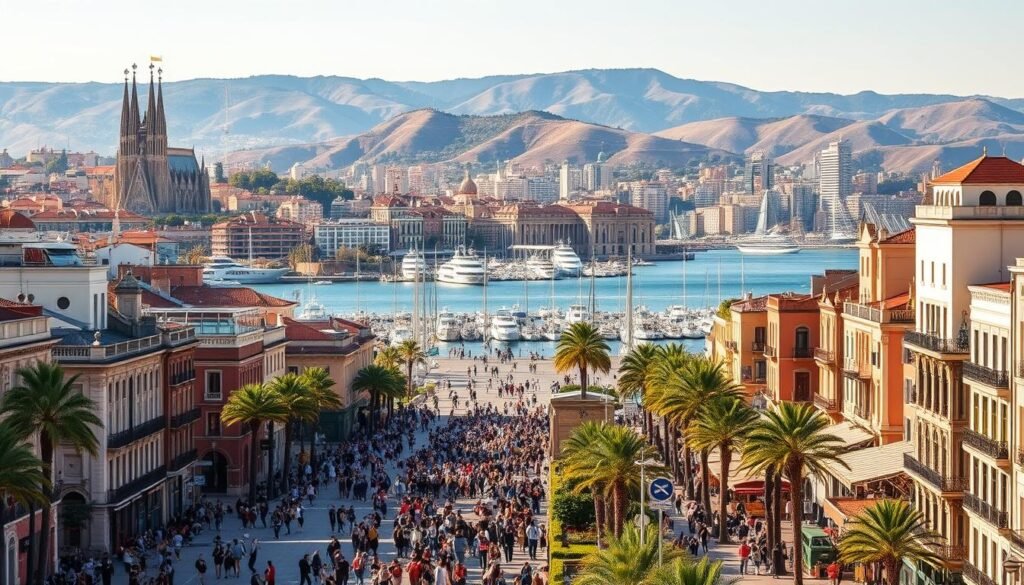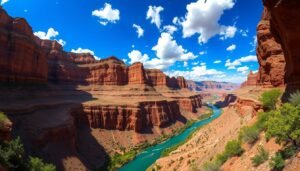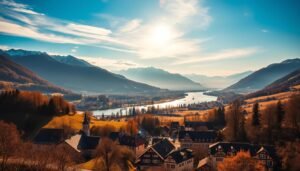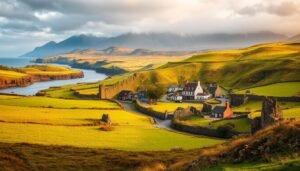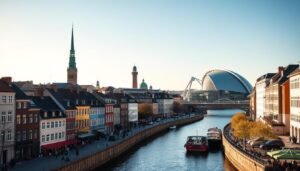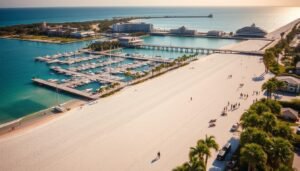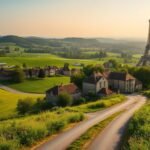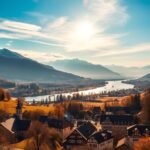Surprising fact: more than 30 million people visit this city each year, and a single multi-attraction pass can save about €90 while skipping long ticket lines.
I write from experience after multiple stays near La Rambla and at Catalonia Plaza Hotel. I share what I actually do on each trip and how I stack visits so I see big landmarks and quiet corners without rushing.
I balance famous sites with local haunts. I point out spots I return to year after year because they still wow me. I also explain when I book ahead and when I simply show up, plus how a Go City–style pass simplifies logistics and cuts costs.things-to-do-in-honolulu
Key Takeaways
- Use a bundled pass to save time and roughly €90 on main entries.
- Mix must-see landmarks with quieter neighborhoods each day.
- Book high-demand sites ahead; wander smaller spots without plans.
- Return to a few favorite places for a deeper experience.
- Follow the route tips here to avoid backtracking and crowds.
My can’t-miss things to do in Barcelona
I plan day one around a single wow moment, then build a gentle route from there. I like starting at a landmark that anchors my sense of place. That reduces zig-zagging and keeps the energy high.
How I plan my first day for maximum wow-factor
I pair one Gaudí interior with an outdoor viewpoint so the day never feels like too much inside time. Sagrada Família and Park Güell are staples on bundled passes, and Casa Batlló’s immersive tour earned a 2022 award after a 2021 revamp.
When I buy tickets in advance to save time (and stress)
I prebook high-demand tickets for Sagrada Família, Park Güell, and Casa Batlló and leave the rest flexible. Early morning or late slots help dodge lines.
- I keep a short list of free-entry windows at MNAC and the Picasso Museum, and note Montjuïc Castle’s free Sundays after 3 pm and first Sundays.
- I map a simple way on foot between stops. If a café or street performance calls me, I lean in.
- One guided tour—like a Gaudí walking tour or an evening cable car combo—often unlocks extra context without rush.
Gaudí essentials: Sagrada Família, Park Güell, and Casa Batlló
![]()
A short loop covering three Gaudí highlights gives the best mix of interiors and open air. I pace these visits over two half-days so each monument breathes and the light works with the details.
Sagrada Família: timing, tickets, and the façades I walk around
I circle the church before my entry to compare the three façades: Nativity’s ornate detail, Passion’s stark drama, and a glimpse of the rising Glory side.things-to-do-in-maui
I lock sagrada familia tickets well ahead and choose morning slots when colored light floods the nave and crowds drop.
Park Güell: main entrance, mosaic bench, and that city view
The main entrance on Carrer d’Olot gets me straight to the dragon, stairways, and the mosaic bench on the hilltop terrace.
Timed entry for park güell is smart—I book early slots for quieter paths and the best city views.
Casa Batlló: immersive updates and why I start on Passeig de Gràcia
I begin on Passeig de Gràcia to take in the block’s elegant façades before the immersive Casa Batlló tour. The 2021 refresh won Europe’s Best Immersive Experience in 2022.
Families note: kids up to 12 enter free, which makes this a great interactive stop.
- Circle Sagrada Família first to study façades before going inside.
- Pair Sagrada with Sant Pau Recinte Modernista for contrast in Art Nouveau.
- Use Carrer d’Olot for direct Park Güell access and climb for the best views.
- Start Casa Batlló on Passeig de Gràcia and enjoy the rooftop last.
Tip: Bundle these attractions across two half-days to avoid overload and savor the architecture without rushing.
Beyond the classics: Casa Milà and Casa Vicens for architecture lovers
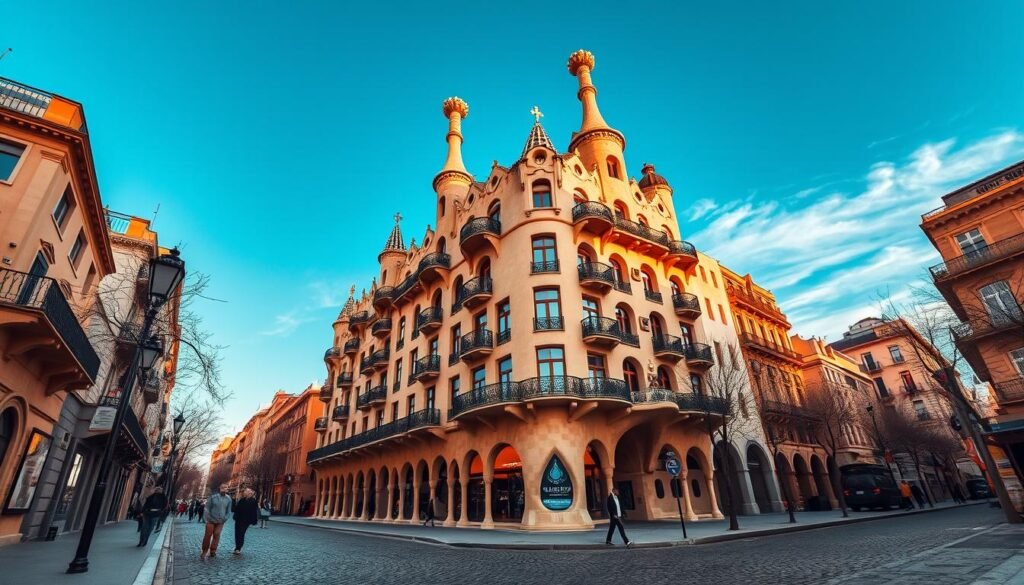
For a quieter dive into Gaudí, I often swap the busiest stops for two homes that reveal different chapters of his work.
Casa Milà (La Pedrera): rooftop chimneys and soft, dreamlike interiors
I head to Casa Milà for that surreal rooftop—helmet-like chimneys watching the city—and then soften the pace inside among the curving rooms.
I prefer a late-morning self-guided tour here so I can linger on each floor and enjoy the dreamlike interiors without rushing.
Casa Vicens: Gaudí’s first house and a quieter look at Modernisme
Casa Vicens feels like stepping into Gaudí’s early mind. Geometric tiles, floral motifs, and bold color hint at later masterpieces.things-to-do-in-madrid
It’s my favorite place to slow down—fewer people, more time to notice patterns and how the building breathes.
- I link these two buildings with a pleasant stroll along surrounding streets and the Eixample grid.
- If short on time, I choose one interior (often Casa Vicens) and admire the other’s exterior for balance.
- I usually add a coffee stop between sites to jot notes and soak up the place.
Over the years, these spots remain my go-to pair for anyone who loves close-up architecture beyond the marquee names.
Neighborhood wanderings: Barri Gòtic, El Born, and Gràcia
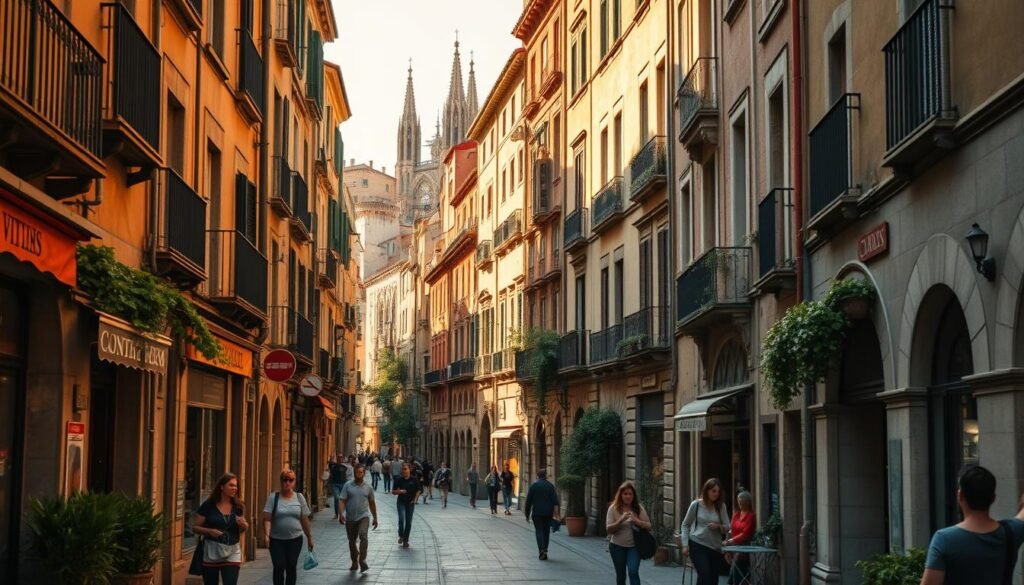
I map no strict route— I let lanes and plazas guide a gentle urban ramble that shows me how the city shifts block by block.
Barri Gòtic: Barcelona Cathedral, Pont del Bisbe, and hidden squares
I drift along medieval streets and pause at the cathedral square for a quiet moment. The cathedral offers paid visits and free worship entry at set times, so I check the schedule before I go.
I always stop under the Pont del Bisbe for a quick photo, then duck into a café when crowds swell. Small plazas feel like stage sets and reward slow exploration.
El Born: Picasso Museum, Santa Maria del Mar, and cozy lanes
In El Born I thread cozy streets between Santa Maria del Mar and the Picasso Museum. The museum posts free slots you can book online about four days ahead—worth timing if you want to save money.
I love how culture and dining sit side by side here; I wander from gallery to tapas and rarely leave the center before nightfall.
Gràcia: plazas, local bars, and Festa Major vibe
Gràcia feels like a small town inside the city. I linger at Plaça del Sol and Plaça de la Vila de Gràcia, people-watch near local bars, and return during Festa Major in mid-August for the decorated streets.
- Timing tip: Gòtic early, Born late morning, Gràcia at golden hour keeps the walk relaxed.
- Blend: Combine all three across an afternoon and let the streets choose the route.
Markets and bites: La Boqueria, Sant Antoni, and my tapas routine

I often arrive before the crowds and let the colors and aromas point the way. Markets are great for a quick lesson in local life and a fast, delicious snapshot of the city.
Mercat de la Boqueria: smart stalls, juices, and jamón cones
La Boqueria sits on La Rambla (La Rambla, 91; Mon-Sat 08:00-20:30) and can get crowded. I skip the flashy front stalls and head deeper for better-value fruit juices and jamón-and-cheese cones.
Tip: I stop near closing on some days when vendors discount items that won’t keep.
Mercat de Sant Antoni: local crowd, great produce, less chaos
When the main street fills with tourist energy, I swing to Sant Antoni for calmer browsing. The market draws locals and hosts a lively Sunday outdoor book market that feels like a Sunday ritual.
Tapas I keep returning to (and when I book in advance)
For small plates I rotate favorites: Cervecería Catalana, Anxoita Bodega, and Cal Pep. Tickets can require booking, and I reserve a spot for peak nights.
I pair a short market stop with a nearby bar so I can graze rather than commit to one heavy meal.
| Market | Vibe | Best time |
|---|---|---|
| La Boqueria | Colorful, tourist-heavy | Morning or near close for discounts |
| Sant Antoni | Local, calmer | Late morning; Sunday for book market |
| Tapas streets | Varied, lively | Reserve for peak evenings |
Views and golden hours: Bunkers del Carmel, Montjuïc, and Tibidabo
![]()
A good skyline spot resets my day; I aim for one memorable overlook rather than many quick stops. Choosing one hill keeps the pace gentle and lets the light work its magic.
Bunkers del Carmel: panoramic sunset and access rules
I head to Bunkers del Carmel for the best city panorama—arriving well before 7:00 PM. Police now close the area at 7:00 PM on most evenings because of resident complaints, so plan accordingly.
I bring a light picnic, leave no trace, and settle in for the sky’s color shift toward sunset.
Montjuïc Castle: cable car, sea views, and late-day light
On Montjuïc, I take the cable car up for wide harbor views and easy access. The castle walls catch soft late-day light and make for calm wandering.
If I’m there on a Sunday, I time the free castle entry after 3 pm for a relaxed, inexpensive outing.
Tibidabo: basilica terraces and vintage park skyline
For a different angle I visit Tibidabo, splitting time between the Temple of the Sacred Heart terraces and the vintage amusement park. The old rides make a playful foreground against the skyline.
- I keep one views stop per day so I’m not racing from hilltop to hilltop.
- I often choose the way down on foot to find quieter overlooks and garden paths.
- If clouds roll in, Montjuïc still delivers atmosphere while Bunkers shines brightest on clear days.
things to do in barcelona at the beach: my Barceloneta game plan
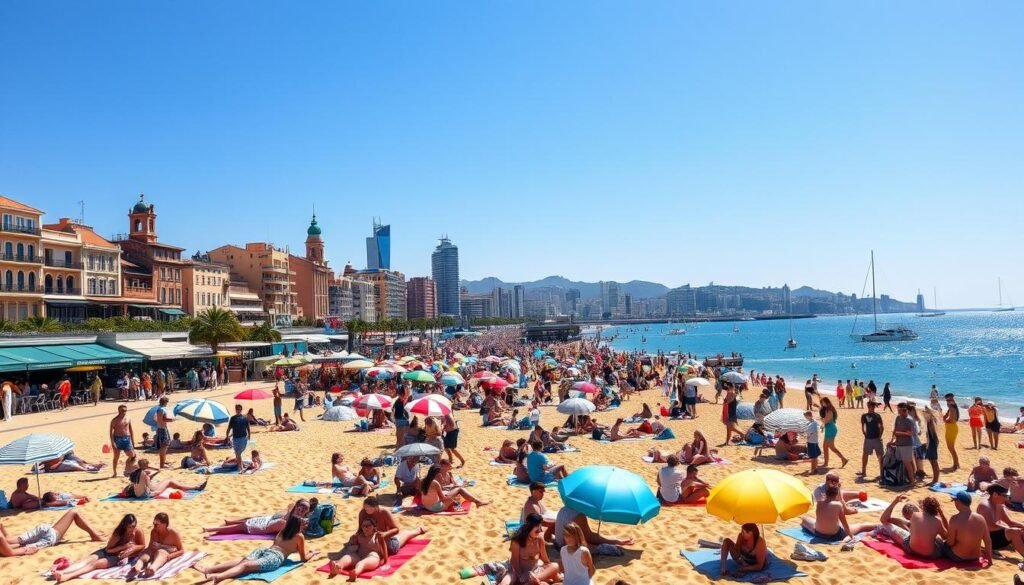
The salt air and harbor hum make Barceloneta my easy day-planner. I start at Port Vell and stroll along Passeig del Mare Nostrum to gauge the light and the crowd.
I often kick off my sandals for a quick swim after that seaside walk. Late afternoon is my sweet spot — the sun softens and the views glow.
When I want seafood, I rotate among Mana 75, Can Fisher, Cheriff, and the classic Can Majó. Each offers honest paella or shellfish that taste of the sea.
How I shape a beach hour
- I avoid peak midday sun and aim for late afternoon swims or espresso by the sand.
- If I need quiet, I walk farther down the beach or hop a short trip to Badalona for calmer shores.
- Evenings bring street musicians and vendors; I keep valuables secure and enjoy the live pulse of people.
- On windy days I shorten swims and linger on the harbor promenade, then finish with a drink at a chiringuito or nearby bars.
Parcs I love: Parc de la Ciutadella and Parc del Laberint d’Horta
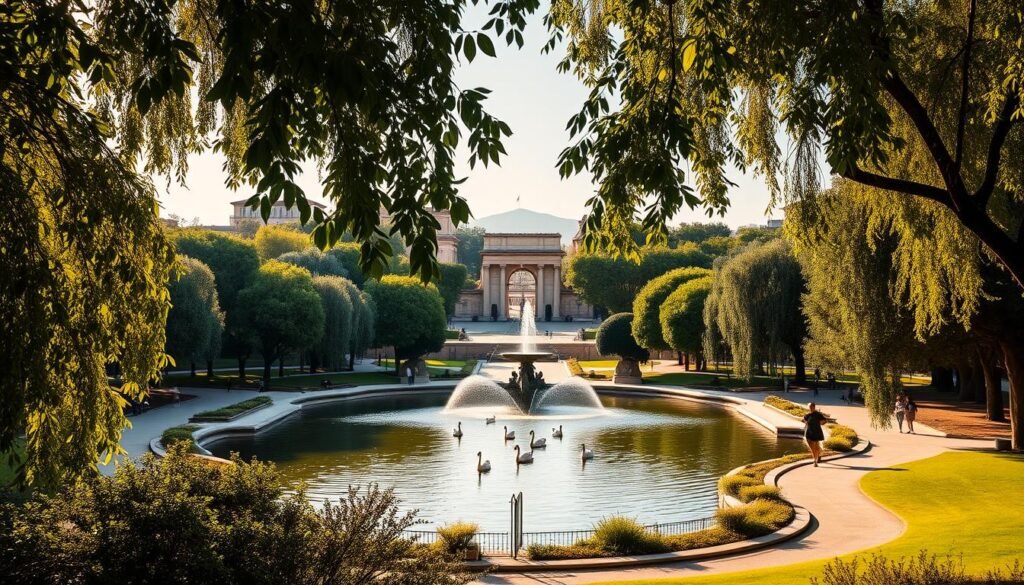
When the city hum becomes too loud, a park visit grounds my day. I plan a gentle pause between museums or after a long walk so I arrive refreshed and present.
Ciutadella: rowboats, Cascada Monumental, and picnic spots
Parc de la Ciutadella is free to enter and perfect for a lazy afternoon. I rent a rowboat and take a slow loop around the lake, then sprawl on shaded lawns near the Cascada Monumental.
I bring a simple picnic and sometimes pop into the nearby Barcelona Zoo if I want a short detour. The park’s paths make for a mellow walk when I need greenery without leaving the center.
Laberint d’Horta: serene maze, statues, and free-entry days
At Parc del Laberint d’Horta I arrive early to enjoy the reflections at the neoclassical pavilion and the quiet fountains. The hedge maze invites slow exploration and gentle discovery.
If I’m watching my budget, I plan this visit on Wednesday or Sunday, when entry is free. These places are my antidote to crowded mornings—perfect for a soft landing in the afternoon.
- In Ciutadella, I rent a rowboat and then rest near the Cascada Monumental.
- I use park time as an easy reset between busy museum days.
- At Laberint d’Horta I wander the maze, savor the statues, and enjoy calm views.
- With friends, we split time between photos and a quiet bench break.
Music and light: Palau de la Música Catalana and the Magic Fountain
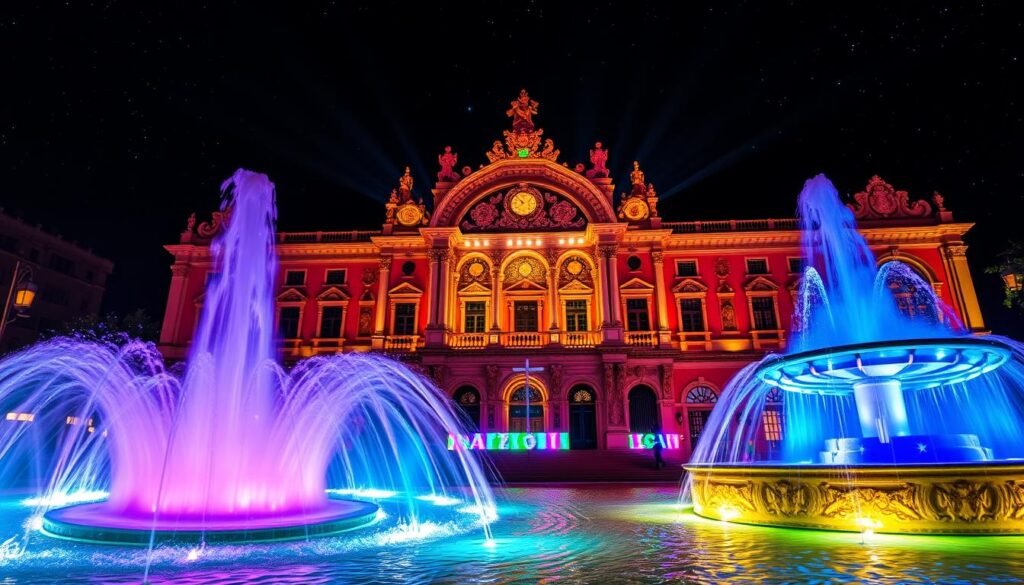
When I want a sound-and-light evening, I plan a route that pairs an ornate concert hall with a dramatic fountain show. Both spots give very different pleasures, and together they make a compact night out in the city center.
Palau de la Música: a riot of color and my favorite balcony view
Palau de la Música Catalana is UNESCO-listed and full of mosaics, stained glass, and playful details in its architecture.
I book a self-guided tour so I can linger at the second-floor balcony, look for roses on the ceiling, and photograph the pavilion columns.
Font Màgica: show schedules and best vantage points
As of September 2025 the Magic Fountain runs Thu–Sun at 9:30 PM; from October the pattern shifts to Thu–Sat. Schedules vary by season, so I always check current listings before I go.
- I arrive early and claim a spot on the MNAC steps for the best sightline.
- If short on time, I pair Palau’s interior earlier with the fountain’s night show.
- I hug the edges during busy moments and let the choreography of water, music, and light wash over me.
Museums that wow (and when I go for free)
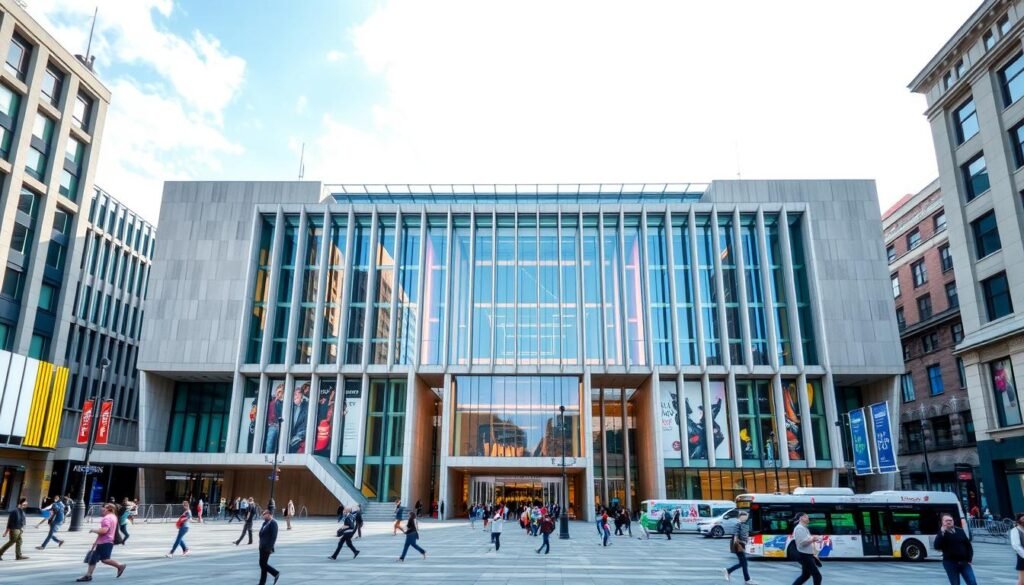
I plan at least one museum visit that balances big names with quieter spaces. That keeps my art days fresh and avoids fatigue.
Picasso Museum: free slots and quick planning
I set a reminder to grab free Picasso Museum tickets online four days before the date. Those free slots—first Sunday monthly and select open-door dates—vanish fast.
If I miss the free window, I still buy a ticket. The collection and the historic rooms reward the visit.
MNAC: Catalan art, terraces, and free Saturdays
For MNAC I aim for Saturdays after 3 pm, when entry is free. I linger on the sweeping terraces and sit on the grand stairs to soak in the view.
Tip: the rooftop gives a compact city panorama that pairs well with a late museum stroll.
Sant Pau Recinte Modernista: quiet Art Nouveau campus
Sant Pau is my calm antidote to busy museum days. Near Sagrada Família, it has light crowds and beautiful modernista architecture.
I often use a simple audio guide and then wander unplanned through courtyards.
| Museum | Free option | Best time |
|---|---|---|
| Picasso Museum | First Sunday monthly; select evenings | Book free tickets online four days ahead |
| MNAC | Saturdays after 3 pm; first Sunday monthly | Late afternoon for terraces and fewer visitors |
| Sant Pau Recinte Modernista | No regular free day; occasional open-door events | Morning or weekday for quiet and light |
Iconic streets and landmarks: La Rambla, Passeig de Gràcia, Arc de Triomf
I favor starting a route on a broad avenue and then letting smaller plazas dictate my pace. Major promenades help me place landmarks and then step off the main flow for quieter moments.
La Rambla now: current works, safer hours, and what I skip
La Rambla is under extensive works through 2027, so I treat it as a quick stroll at off hours. I prefer early mornings or late evenings when it feels calmer.
I skip tourist terraces and watch the construction zones. Mostly I use the avenue as a connector to markets or the harbor rather than my main destination.
Passeig de Gràcia: architectural gems between shopping stops
Passeig de Gràcia links Plaça de Catalunya with the famous Gaudí façades. I weave shopping stops between notable façades and save house interiors for prebooked times.
Watch how the streets open into plazas — those moments often guide my pace toward the center.
Arc de Triomf to Ciutadella: my favorite city-center walk
For a relaxing city-center walk I start at Arc de Triomf and follow the palm-lined promenade into Parc de la Ciutadella. Early morning is best for photos; light is soft and crowds are thin.
- I keep a short list of landmark stops so the route feels like a story, not a checklist.
- If an area feels crowded, I duck one street back for a faster parallel path.
Unique tours and unforgettable experiences
A favorite move of mine is choosing one guided experience that turns familiar landmarks into fresh stories. That single pick often shapes the mood of an afternoon and leaves the best memories.
Sunset sailing with cava along Port Vell and the skyline
I book a small-group sunset sailing (Barcelona Sailboats runs groups of about 11) so the hour feels intimate. We sip cava and nibble snacks while the W Hotel, Sagrada Família, and Tibidabo glide past. The water reframes the city and makes well-known landmarks feel new.
Gaudí walking tour: stories behind the buildings I pass
For depth, I take a guided Gaudí tour—Runner Bean Tours–style routes that last roughly three hours.
Tip: wear comfy shoes. Three hours vanish fast when a great guide adds stories, context, and small details I missed before.
Montjuïc cable car: an easy way to pair views and the light show
The cable car up Montjuïc is an easy, scenic way to link a castle visit with an evening fountain show.
- I ride up for wide views, then glide down toward the Magic Fountain for a relaxed finish.
- If marquee tickets are scarce, I book a tour that includes entrance so I don’t miss the highlight.
- I usually slot one guided outing per afternoon so each experience feels special on my trip.
Taste the city: tapas, paella, and a memorable splurge dinner
I plan my evenings around one great meal and a few small discoveries nearby. That gives the night shape and leaves room for surprises.
My go-to tapas rhythm and neighborhoods for great bars
Simple rules: I hit two spots, sample three plates each, and share everything. It keeps variety high and food costs low.
I follow locals through El Born and Gràcia, duck into bars like Boca Chica for a cocktail, then linger where the vibe and flavors match.
Paella near the sea and cooking classes I recommend
For paella I favor seaside restaurants. Mana 75 delivers drama, Can Fisher wins for view, and Cheriff serves elevated classics.
Cooking classes are fun when friends visit — a hands-on session turns dinner into a memory that lasts the trip.
A special-occasion restaurant I still dream about
When I want a splurge, I book Montiel (Calle Flassaders 19). The fixed eight-course menu is about €70 and runs daily at lunch and dinner.
“I remember that evening for the pacing and the warm service — each course felt personal and perfectly timed.”
| Style | Example | Why I pick it |
|---|---|---|
| Tapas | Cervecería Catalana, Cal Pep, Anxoita Bodega | Share plates, more variety, lively bars |
| Paella | Mana 75, Can Fisher, Cheriff | Sea breeze, theatrical rice, honest flavors |
| Splurge | Montiel | Thoughtful tasting menu, warm service |
Quick tip: I skip heavy lunches so I can graze in the evening. I also ask staff for one seasonal dish I shouldn’t miss — that’s how I find new favorites.
Shopping like a local: Atelier Madre and maker streets
I follow narrow maker lanes until the scent of leather pulls me into a small workshop on Carrer del Rec. Atelier Madre (Carrer del Rec, 20; daily 11 am-8 pm) is an atelier-boutique where artisans design, craft, and sell premium goods all under one roof.
Leather crafted before your eyes in El Born
Atelier Madre uses vegetable-tanned leather from Igualada. Watching the cutting, stitching, and finishing makes a purchase feel personal and memorable.
The shop is one building where everything happens: ideas are sketched, patterns are cut, and the final piece leaves the same door where it was made. I always ask about care and patina so the item gains character with use.
The architecture around these workshops adds charm. Old stone façades meet warm light and small studios. I often target this one place and then drift past one or two more studios on the same street.
I balance souvenirs with items I will use daily, so the city stays with me through objects that age well and tell a story.
For a quick shopping route, see my local shopping guide for curated maker streets and nearby studios.
Smart passes, tickets, and time-saving moves
I start by pricing my planned stops against a bundled pass so I know if the card truly saves money and time. A short list of paid entries helps me avoid surprises and keeps my days flexible.
Go City and Barcelona Card: when they make sense for my trip
Go-style passes can save roughly €90 across top entries when I’ll visit multiple paid attractions in a few days. I check whether the pass includes Sagrada Família, Park Güell, and Casa Batlló before I commit.
I also compare transport perks: the Barcelona Card and Explorer-style bundles often include transit, which can be handy on short stays.
Booking strategy for high-demand attractions
I always book Sagrada Família and Park Güell in advance and set calendar reminders for release windows.
For Casa Batlló and Casa Milà I prefer morning or late slots so the rest of my day stays open. I keep QR copies in one offline folder and weigh a paid guide against self-guided audio before buying extra services.
| Choice | When I pick it | Key benefit |
|---|---|---|
| Bundled pass (Go/Explorer) | Several paid attractions across a few days | Saves money, skips lines |
| Barcelona Card | Need transit plus entries | Transport included, flexible visits |
| Single tickets | Short trip with a couple of must-sees | Lower upfront cost, targeted plan |
How I plan my days: routes, timing, and beating the crowds
I map each day around one big anchor and then thread smaller stops that fit the mood. That approach keeps my energy steady and lets sunlight and crowds shape the plan.
Two perfect loops I use
Gothic-to-sea loop: I start near Plaça de Catalunya in the center, slip through Barri Gòtic lanes, cross La Rambla briefly, and finish at Port Vell and Barceloneta for a beachside finish. It’s a compact walk that moves from stone streets to open water without extra transit.
Gaudí-on-Gràcia loop: I link Casa Batlló and Casa Milà on Passeig de Gràcia with a lazy crawl through Gràcia plazas. I save tapas for the plazas and let the neighborhood set the pace.
Sunrise, siesta, and sunset slots I aim for
- I book top interiors early in the day when light is best and people counts are low.
- I plan a long lunch or siesta as a buffer so energy lasts across days.
- I use sunrise for photos and sunset for viewpoints or a waterside stroll—that way I avoid peak crowds and get the best light.
Conclusion
I end most days by pausing in a small square, noting what surprised me, and tweaking the plan for the next morning.
Barcelona rewards curiosity: mix big icons with tiny finds and you’ll stitch your own story. With a little planning, free windows, and smart tickets you save time and feel unrushed.
strong, build a trip around a few personal must-sees and leave space for wandering; that is where the real magic appears. Use this guide as a flexible framework rather than a checklist and adapt it to your pace.
From Gaudí’s curves to sunset by the water, the city keeps revealing new angles on familiar views. I hope these notes help shape experiences you’ll tell friends about for years.


